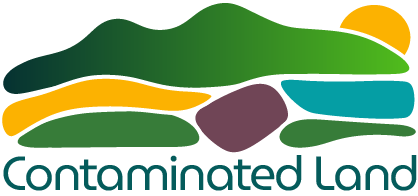Vitrification is a high-temperature remediation technique that transforms contaminated soils into a stable, glass-like solid. This process involves heating materials to temperatures exceeding 1,000°C, which melts alumino-silicate minerals to form a vitrified monolith. Inorganic contaminants are chemically incorporated into the glassy matrix, significantly reducing their mobility, while organic compounds are incinerated. Any gaseous by-products or volatile substances released during heating are captured and treated through emission control systems. As a result, the final product is both structurally stable and environmentally secure, with up to a 30% reduction in soil volume.
This technique is especially suitable for treating a wide range of contaminants, including volatile and semi-volatile organic compounds, PCBs, PAHs, pesticides, PFAS, and potentially toxic elements. It is most commonly applied off-site due to the need for specialist equipment and safety precautions. However, in situ vitrification can also be conducted, although it demands a flat terrain and adequate buffer zones to prevent heat damage to nearby structures. The treated material, once vitrified, possesses excellent leach resistance, making it suitable for permanent disposal with minimal environmental risk.
Despite its effectiveness, vitrification is limited by its high operational costs and energy demands. The soil is entirely destroyed in the process, preventing future use of the original material. Moreover, the technology requires careful characterisation of input materials to avoid dangerous reactions, especially from excessive moisture or volatile elements like sulphur, nitrogen, and chlorine. The off-gas treatment system must also be robust, as emissions from the process can include hazardous substances. These factors restrict its routine application to highly contaminated or high-risk sites, such as those dealing with radioactive waste.
From a sustainability perspective, vitrification offers clear benefits in terms of risk reduction and waste minimisation, particularly through the production of an inert solid that can act as a long-term containment medium. However, these advantages are tempered by concerns over energy consumption, emissions, and the irreversible transformation of soil structure. Regulatory scrutiny is typically focused on air emissions and operational safety, especially where in situ vitrification is proposed. Nevertheless, the method remains a viable option where conventional remediation is inadequate or where long-term contaminant containment is critical.


